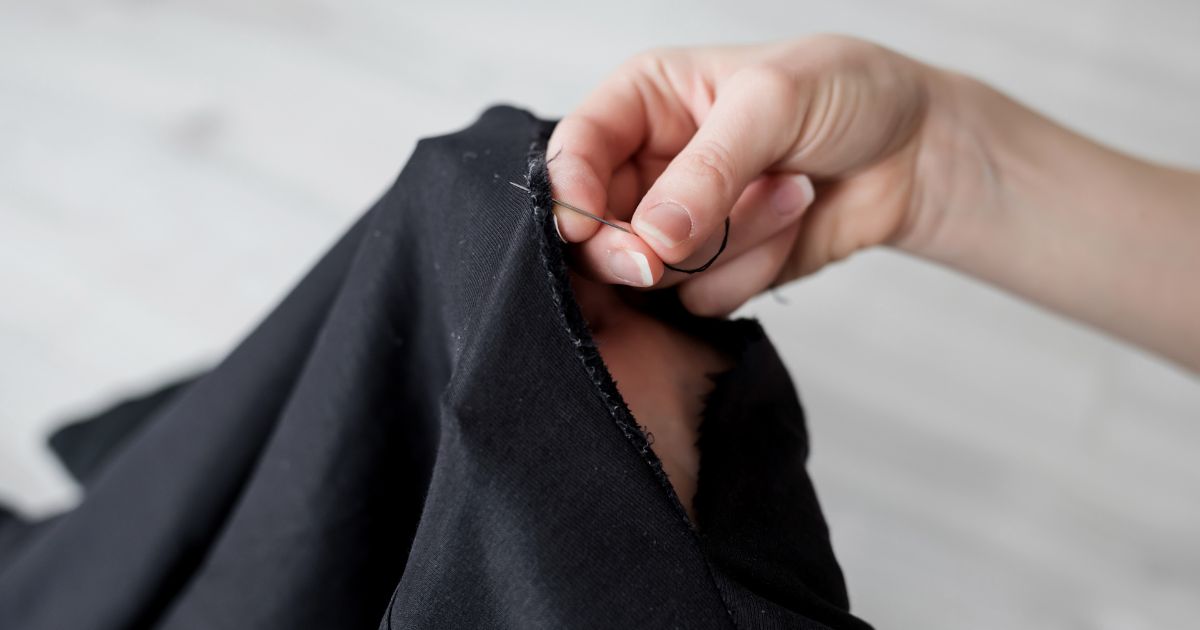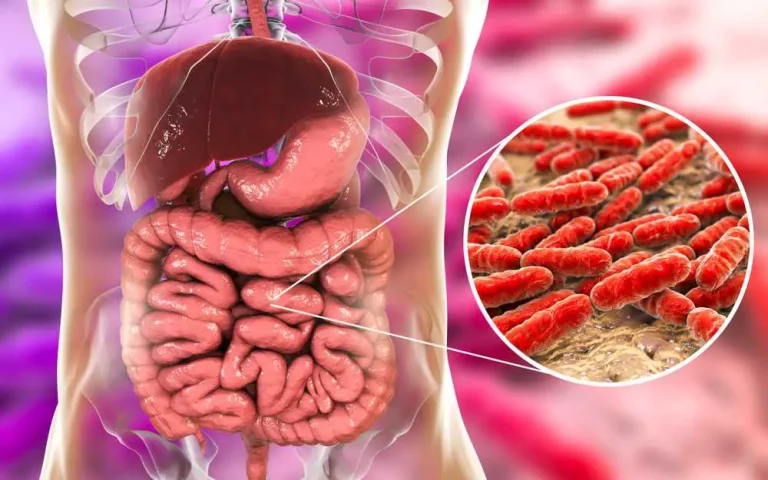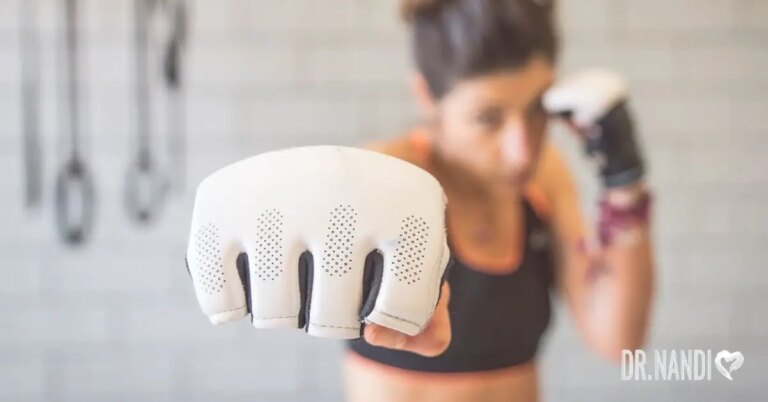In the realm of personal health and wellness, we often focus on diet, exercise, and mental health practices, yet overlook an everyday aspect that directly impacts our well-being: our wardrobe. The state of our clothes—how they’re maintained, washed, and cared for—plays a crucial role in our hygiene and overall health. Wearing poorly maintained or inadequately washed garments can expose us to harmful bacteria and chemicals, potentially leading to skin irritations, allergies, and other health concerns. Furthermore, using toxic detergents and a dirty washing machine can introduce additional risks, affecting our skin and the air quality in our homes.
As a doctor, I’ve seen the subtle yet significant ways in which a neglected wardrobe can affect health. From the discomfort of wearing clothes that irritate the skin to the more serious risk of developing rashes or infections from bacteria-laden fabrics, the connection between our clothing care practices and our health is undeniable. This extends beyond just the physical, impacting our mental well-being by influencing how comfortable and confident we feel in our daily lives.
Recognizing the importance of wardrobe wellness as part of a holistic health approach invites us to reconsider how we select, care for, and maintain our clothes. This article aims to shed light on the common causes of clothing damage and how these can be prevented or mitigated. By understanding that each hole, tear, or wear in our garments carries with it a story of overlooked aspects of our health and wellness, we embark on a journey to not only extend the life of our clothing but also enhance our health and comfort.
In delving into the causes of wear and tear in clothing, we uncover a narrative that intertwines with the principles of self-care and environmental awareness, advocating for choices that support both our personal well-being and the health of our planet. Let’s explore these connections further, starting with the common culprits behind clothing damage and how addressing these issues can be an extension of our commitment to a healthy, balanced lifestyle.

What Causes Holes in Clothing?
The journey through our wardrobe is more than a daily ritual; it’s an interaction with materials that touch our skin, affect our comfort, and can influence our health in subtle ways. Recognizing the potential health impacts of how we maintain and care for our clothes is crucial. Let’s explore the common causes of clothing damage and how these factors can affect our well-being.
- Friction: The friction that results from daily activities doesn’t just wear down fabric; it can also lead to skin irritation. Clothes that become rough or threadbare from constant rubbing can aggravate sensitive skin, causing discomfort or exacerbating existing skin conditions like eczema. This reminds us that our clothes are indeed our second skin, requiring careful selection and maintenance to ensure they protect rather than harm our health.
- Snags and Tears: Unexpected snags and tears aren’t merely aesthetic issues. They can transform a garment into a collector of dust, pollen, and other allergens, especially if the damage compromises the integrity of the fabric. This can be particularly concerning for individuals with allergies or asthma, as wearing these clothes can lead to unnecessary exposure to irritants.
- Material Quality: The quality of the materials from which our clothes are made can significantly impact our skin’s health. Fabrics treated with harsh chemicals or made from synthetic fibers may trigger allergic reactions or skin irritation in sensitive individuals. Conversely, natural, breathable fabrics like cotton, silk, and linen are gentler on the skin, underscoring the importance of choosing quality materials that support rather than compromise our well-being.
- Aging and Washing: The aging process of clothes, accelerated by frequent washing in harsh detergents and at high temperatures, can affect more than the garment’s lifespan. Residual chemicals left on clothes can irritate the skin. At the same time, the breakdown of fibers can create a less comfortable fit and feel, impacting our overall comfort and, by extension, our health and well-being.
- Insects: The role of moths, beetles, and silverfish in degrading our clothes also poses a hidden health risk. Beyond the physical damage, these pests can introduce allergens into our wardrobe, creating an environment that can subtly affect individuals with sensitive skin or respiratory conditions.
The Role of the Washing Machine in Clothing Damage
It’s a scenario many of us have faced: pulling a favorite garment out of the washing machine only to find it has developed an unexpected hole or tear. While it’s easy to blame fabric quality or assume it’s just the wear and tear of life, sometimes the culprit is much closer to home—your washing machine. Understanding how your washing machine can inadvertently damage your clothes is key to preventing such mishaps and ensuring your wardrobe remains in top condition.
Overloading: The Silent Fabric Stressor
One of the most common mistakes is overloading the washing machine. A drum that’s too full doesn’t allow clothes enough space to move freely. This not only affects the cleaning process but also creates excessive friction among garments, leading to stretching, snagging, and ultimately, holes.
Agitator Woes: Rough on Clothes
Traditional washing machines with central agitators can be particularly harsh on clothes. These machines work by moving garments through the water and against the agitator to remove dirt. However, this process can be tough on fabric, especially delicate items, leading to damage over time. Switching to a machine with a gentler impeller or opting for a front-loader can reduce this risk.
Loose Objects: Hidden Harms in the Drum
Before tossing clothes into the machine, checking pockets for loose items like coins, keys, or pens is crucial. These can become projectiles during the wash cycle, causing rips or holes in the fabric. Additionally, bra wires or other metal fastenings that come loose can snag and rip fabrics, turning a simple wash into a damaging ordeal.
Harsh Detergents: Chemical Culprits
The choice of detergent plays a significant role in the health of your clothes. Harsh chemicals can weaken fibers over time, making them more susceptible to damage. Opting for mild, fabric-friendly detergents can help preserve your garments’ integrity for longer.
Spin Cycle: High Speed, High Risk
While a high-speed spin cycle can help reduce drying time, it can also put considerable stress on fabrics. Delicate items, in particular, are vulnerable to being stretched or torn by the intense forces at play. Using a lower spin speed for sensitive materials can help mitigate this risk.

The Impact of a Dirty Washer
Maintaining the cleanliness of your washing machine is crucial, not just for the machine’s longevity but also for the well-being of your clothes. A dirty washer can be a hidden enemy in your laundry routine, contributing to the very problems you’re trying to avoid, such as stains, odors, and yes, even holes in your garments. Understanding the impact of a dirty washer and how to keep it clean can make a significant difference in the care and maintenance of your clothing.
Buildup Leads to Breakdown
Over time, washing machines can accumulate detergent residue, fabric softener, lint, and grime. This buildup doesn’t just compromise the machine’s efficiency; it can also redeposit on clothes, leading to stains or odors. More concerningly, trapped particles and hardened residue can become abrasive, potentially causing wear or tiny tears in fabric that can enlarge into noticeable holes.
Mold and Mildew: The Unseen Culprits
Areas of the washing machine that remain damp after cycles, such as seals and detergent drawers, can become breeding grounds for mold and mildew. These fungi not only produce unpleasant odors that can transfer to your clothes but may also contribute to fabric degradation over time.
Keeping Your Washer Clean and Clothes Safe
Ensuring your clothes are truly clean and undamaged requires regular maintenance of your washing machine. Here are some tips to keep your washer in optimal condition, protecting your garments from harm:
- Monthly Cleaning Cycles: Run a cleaning cycle on your washing machine at least once a month. Use a washer cleaner or a homemade solution of hot water and vinegar to break down residue and eliminate odors.
- Wipe Down Seals and Detergent Drawers: After each use, wipe down the rubber seals and detergent drawers to remove moisture and prevent the growth of mold and mildew.
- Leave the Door Open: Allow the washer drum to air out between uses by leaving the door (or lid) open. This prevents excess moisture buildup and reduces the risk of mold.
- Remove Clothes Promptly: Don’t let damp clothes sit in the machine for long periods. This can contribute to mold growth and can also cause colors to bleed or fabrics to weaken.
- Check and Clean Filters: Regularly inspect and clean out any lint or debris filters your machine may have, ensuring they’re not contributing to clogs or poor drainage.
A clean washing machine is more than just a household chore; it’s an investment in the longevity and appearance of your wardrobe. By maintaining a clean washer, you ensure that each cycle leaves your clothes refreshed, undamaged, and ready to wear.
The Risks of Neglecting Wardrobe Care
Poorly maintained and washed clothes can harbor a range of health risks, from skin irritations to respiratory issues. When garments are not properly cleaned or are washed with harsh chemicals, residues can remain in the fabric, coming into direct contact with the skin and potentially causing allergic reactions or dermatitis. Moreover, damp or improperly stored clothing can become breeding grounds for mold and mildew, leading to respiratory problems and unpleasant odors that affect our living environment.
1. Skin Health and Hygiene
Clothes in direct contact with your skin can either contribute to its health or detract from it. Wearing garments that have been washed in toxic detergents or not thoroughly cleaned can expose your skin to irritants. This is particularly concerning for individuals with sensitive skin or conditions like eczema, where the choice of clothing and laundry care products can significantly impact comfort and symptom management.
2. Respiratory Wellness
The importance of clean, well-maintained clothing extends to respiratory health. Fabrics that trap dust, pet dander, and other allergens, or that are stored in damp conditions fostering mold growth, can lead to or exacerbate respiratory issues, including asthma and allergies. Ensuring clothes are thoroughly dried and stored properly is key to minimizing these risks.
3. Mental Health and Comfort
The link between clothing and mental health is often underestimated. How we feel in our clothes—comfortable, confident, and clean—can influence our mood and self-esteem. Garments that are well-cared-for not only look better but also make us feel better, contributing to a positive self-image and overall mental well-being.
Strategies for a Health-Conscious and Sustainable Wardrobe
Incorporating a health-conscious approach to wardrobe maintenance not only benefits our well-being but also aligns with sustainable living practices. Here are actionable strategies to ensure your wardrobe supports both your health and the environment.
1. Choose Skin-Friendly Laundry Products
Opt for detergents and fabric softeners that are free from harsh chemicals, fragrances, and dyes. These products are less likely to cause skin irritation and are better for the environment. Consider natural or organic laundry products that use plant-based ingredients for a gentler wash.
2. Embrace Natural Fibers
Natural fibers like cotton, linen, bamboo, and wool are more breathable and less likely to irritate the skin compared to synthetic fibers. They also tend to be more sustainable, as they’re renewable and biodegradable. Choosing garments made from these materials can enhance both your personal comfort and your eco-friendly lifestyle.
3. Adopt Gentle Washing Practices
Washing clothes in cold water and selecting gentle cycles can significantly reduce wear and tear on fabrics, preserving their integrity and extending their lifespan. This approach also saves energy and minimizes the release of microfibers into waterways, supporting environmental health.
4. Air Dry When Possible
Air drying clothes not only conserves energy but also reduces the risk of fabric shrinkage and degradation. Hanging clothes to dry is gentler on fabrics and eliminates the exposure to high heat that can break down textile fibers and contribute to skin irritation.
5. Implement Regular Wardrobe Audits
Regularly assessing your wardrobe allows you to identify and repair minor damages before they become major issues, reducing waste and the need for frequent replacements. This practice encourages a more mindful and intentional approach to clothing consumption, favoring quality and longevity over fast fashion trends.
6. Practice Proper Storage
Store clothes in a clean, dry environment to prevent mold and mildew growth, which can damage fabrics and pose health risks. Using natural moth repellents, such as cedar blocks or lavender sachets, can protect garments without the need for chemical alternatives.
7. Mindful Disposal and Recycling
When clothes are beyond repair or no longer fit, consider donating them to charitable organizations or recycling them through textile recycling programs. This reduces landfill waste and supports the circular economy, minimizing the environmental impact of your wardrobe.
8. Educate Yourself on Sustainable Brands
Support brands that prioritize sustainability in their manufacturing processes and materials. By choosing to buy from companies that are transparent about their environmental impact and ethical practices, you contribute to a market demand for responsible fashion.
Preventing Damage Before It Starts
A stitch in time saves nine, as the old saying goes, and this couldn’t be truer when it comes to clothing care. The longevity of your garments is significantly influenced by the preventative measures you take to protect them from damage. By adopting a few mindful practices, you can safeguard your clothes against the common culprits of wear and tear, ensuring they remain a cherished part of your wardrobe for years to come. Here are practical ways to keep your clothes hole-free:
Gentle Washing Techniques
- Turn Clothes Inside Out: This simple step reduces friction against the fabric’s surface during washing, helping to preserve its integrity.
- Opt for Gentle Wash Cycles: Choosing mild detergents and gentle cycles minimizes the stress on your clothes, maintaining their color, shape, and strength.
Sorting and Separating
- Wash Similar Fabrics Together: Grouping similar materials prevents rougher fabrics from damaging more delicate ones.
- Separate Heavy Items: Keep heavier garments like jeans away from lighter fabrics to avoid abrasion and stretching.
Protective Measures
- Use Garment Bags: Placing delicate items in mesh laundry bags protects them from snagging and tangling.
- Avoid Overloading: Ensure your washing machine isn’t packed too tightly. Clothes need room to move freely, reducing the risk of stretching and tearing.
Drying and Storage Tips
- Air Dry When Possible: The heat and tumbling of dryers can weaken fibers. Air drying is gentler and helps preserve the fabric’s longevity.
- Store Clothes Properly: Use smooth hangers and ensure drawers are free from sharp edges. Cedar blocks or moth repellents can deter pests.
Mindfulness and Immediate Care
- Regular Inspections: Check your garments for early signs of wear and reinforce them before holes develop.
- Immediate Action on Damage: Address snags or small tears promptly to prevent them from enlarging.
- Quality Over Quantity: Investing in higher-quality clothes made from durable fabrics pays off in the long run, reducing the likelihood of damage.
By integrating these strategies into your routine, you not only extend the life of your clothes but also contribute to a more sustainable lifestyle. Caring for your garments thoughtfully means fewer resources consumed and less waste produced, aligning your actions with the values of health, sustainability, and mindful living.
No-Sew Methods for Fixing Holes
Discovering a hole in your clothing doesn’t have to signal the end of its journey. Even if you’re not a fan of sewing or simply don’t have the time for it, there are several no-sew techniques that can come to your rescue. Here are some easy yet effective, methods to fix holes without picking up a needle:
1. No-Sew Fabric Adhesives
Fabric adhesives are a miracle for quick fixes. They come in various forms like gels, strips, and sheets and are compatible with many materials.
How to use:
- Clean the area around the hole.
- Apply the adhesive around the edges of the tear.
- Press the fabric together, wipe away any excess glue, and let it dry as per the product’s instructions.
2. Fusible Bonding Web
Ideal for mending holes along seam lines or in less stretchy areas, fusible bonding webs are a strong ally.
How to use:
- Cut a piece of the web slightly larger than the hole.
- Position it between the fabric’s torn sides.
- Use a hot iron (with a protective cloth over it) to bond the web and fabric together.
3. Fabric Patches
Patches aren’t just functional; they’re a fashion statement. They’re perfect for covering larger holes and adding a personal touch to your garment.
How to use:
- Choose a patch that either matches or stylishly contrasts with your garment.
- For self-adhesive patches, just peel and stick.
- Secure non-adhesive ones with fabric glue or a fusible bonding web.
4. Self-Adhesive Garment Tapes
When you need a quick, temporary fix, garment tape is your go-to. It’s excellent for minor repairs like hemming or covering small holes.
How to use:
- Cut the tape to the desired size, ensuring extra margin to cover the hole completely.
- Press it firmly over the hole, ensuring it adheres to both sides of the fabric.
- These no-sew methods offer a convenient and quick way to extend the life of your clothing.
With creativity and suitable materials, you can make your clothes look as good as new.

Solutions for a Safe Wash
A little awareness and care can go a long way in preventing your washing machine from becoming a garment’s nightmare. Here are some essential tips to ensure a safe wash and keep your clothes hole-free:
- Regular Maintenance: A well-maintained washing machine is less likely to cause unexpected damage. Regularly check and clean the drum, filters, and seals to keep your washer in top condition.
- Use Mesh Bags: Delicate items especially benefit from the protection of mesh laundry bags. These bags safeguard them from getting tangled or harshly rubbed against other items during the wash cycle.
- Balance Your Loads: An unevenly loaded washer can lead to uneven drum movement, increasing the risk of damage to your clothes. Distribute your clothing evenly to ensure a smoother operation.
- Select the Right Cycle: Different fabrics require different care. Always choose the appropriate washing cycle for the type of clothing you’re cleaning – delicate items should not be washed on the same cycle as heavy cottons or jeans.
- Inspect and Replace: Look for signs of wear in your washer, such as rust or peeling paint inside the drum, which could snag clothing. If parts are worn out or the machine is old, consider replacing them or upgrading to a newer model.
By incorporating these practices into your laundry routine, you can significantly reduce the risk of damage to your clothes, ensuring they stay intact and look their best for longer.
Caring for Your Repaired Clothing
After you’ve successfully repaired your clothing using no-sew methods, it’s important to take special care during washing and maintenance to ensure the repair lasts. Here’s how you can safeguard your newly mended garments:
- Gentle Cycle: Always opt for the gentle or hand-wash cycle on your washing machine. This reduces the stress on both the fabric and the repair, helping to keep everything intact.
- Cold Water: Cold water is kinder on repairs, especially those involving adhesives. Hot water can weaken the bond, causing the repair to come undone.
- Turn Inside Out: Before washing, turn the garment inside out. This offers an extra layer of protection to the repaired area, keeping it away from direct contact with other clothes and the washing machine drum.
- Mesh Laundry Bags: For added safety, place your repaired clothing in a mesh laundry bag. This minimizes friction and pulling, which could potentially damage the repair during the wash.
- Mild Detergent: Choose detergents that are gentle and designed for delicate fabrics. Harsher detergents can break down the adhesives used in no-sew repairs.
- Limit Spin Cycles: High-speed spins can be rough on clothing repairs. Opt for a lower spin cycle to avoid putting undue strain on the no-sew fixes.
- Air Dry: Whenever possible, air dry your repaired garments. Tumble dryers can be harsh on the adhesive or bonding materials used in no-sew repairs, potentially undoing your hard work.
By following these simple yet effective care tips, you can significantly extend the life of your no-sew repairs, ensuring your clothes remain wearable and in good shape.
The art of maintaining and repairing our clothing, without resorting to sewing, is a metaphor for the care we should extend to ourselves and our environment. It reflects a balanced approach to living, where the wellness of our garments parallels the wellness of our bodies and planet. This holistic view underscores the message that health is not merely the absence of illness but a state of complete physical, mental, and social well-being, achieved through conscious choices and sustainable practices.
As we move forward, let us weave these principles of garment care into the fabric of our daily lives, embracing them as part of a comprehensive approach to wellness. By doing so, we not only enrich our lives but also contribute to a healthier, more sustainable world.
My Personal RX on Enhancing Wellness through Conscious Wardrobe Care
In my practice, I often emphasize the broad spectrum of factors influencing our health, extending beyond the conventional focus on diet and exercise to include the everyday choices we make, such as the care and maintenance of our wardrobe. Poorly maintained or inadequately washed clothing can subtly yet significantly impact our hygiene and wellness, leading to skin irritations, allergies, and even affecting our mental well-being. Here are refined tips integrating broader wellness concepts for ensuring your garments promote health rather than hinder it:
- Choose Hypoallergenic Laundry Detergents: Opt for detergents free from harsh chemicals and fragrances to reduce the risk of skin irritations and allergies.
- Wash New Clothes Before Wearing: This removes any residual chemicals or irritants from the manufacturing process, offering a clean and fresh start.
- Regularly Clean Your Washing Machine: Prevent the buildup of mold and bacteria in your machine to ensure your clothes come out as clean and healthy as possible.
- Incorporate my Men’s & Women’s Core Essentials into Your Routine: High-quality garments, like high-quality nutrients, play a vital role in our overall well-being. I suggest incorporating my Men’s & Women’s Core Essentials into your daily routine to improve your overall well-being. These supplements are specifically formulated to provide the necessary nutrients that modern men and women require, just as investing in clothing that meets your personal and lifestyle needs is essential.
- Protocol Guide for Holistic Health Education: It is essential to learn about proper clothes maintenance, just as it is crucial to know about holistic health. To help you focus on all areas of health and live your best life, My Protocol Guide provides a comprehensive resource that serves as a guide.
- Dry Clothes Completely Before Storing: Damp clothes can breed bacteria and mold. Ensure your garments are thoroughly dry to maintain their freshness and protect your skin health.
- Detoxify Your Laundry Routine: Eliminate toxic detergents and fabric softeners from your laundry routine as part of a broader detoxification strategy for your home. Choosing products with natural ingredients reduces your exposure to potentially harmful chemicals.
- Refresh Your Wardrobe with Natural Fiber Clothing: Garments made from natural fibers breathe more easily, reducing the risk of skin irritations and supporting your body’s natural regulatory processes, much like choosing whole foods over processed options.
- Practice Regular Inspection and Maintenance of Clothes: Catching minor issues before they become major can prevent skin irritations and discomfort, mirroring the preventative approach in holistic health care.
- Practice Conscious Consumption: In a world inundated with fast fashion, make a deliberate choice to support brands committed to ethical and sustainable practices. This approach not only benefits the environment but also ensures that the clothes you wear align with your values of health and well-being.
By integrating these practices into your routine, you not only ensure your garments are conducive to good hygiene and wellness, but you also adopt a more mindful and holistic approach to your health. Remember, the layers closest to your skin deserve as much care and attention as any other aspect of your well-being.




















